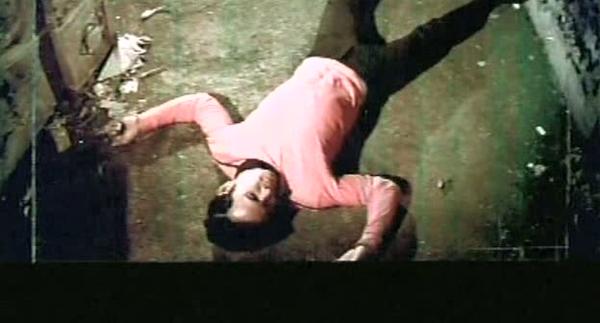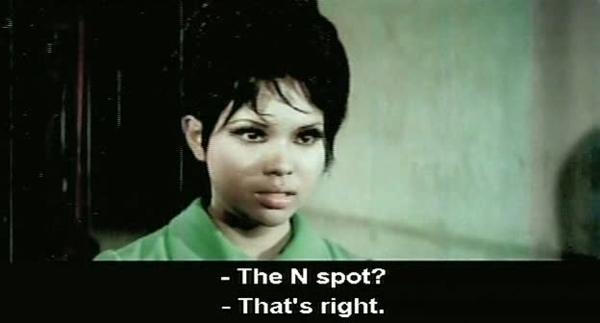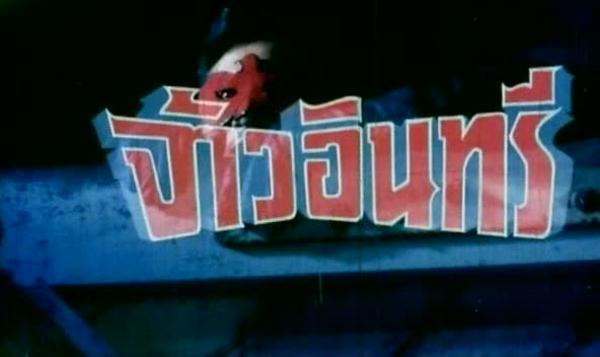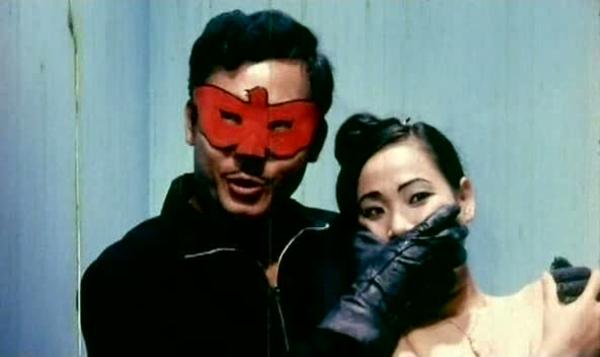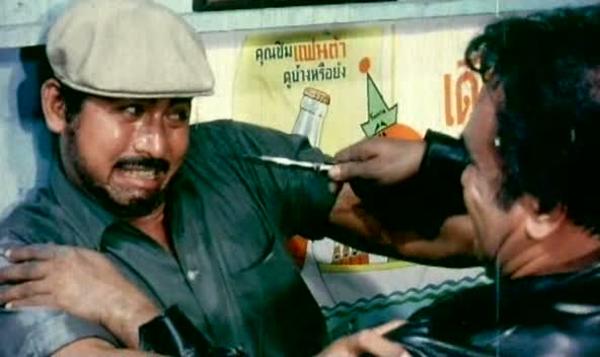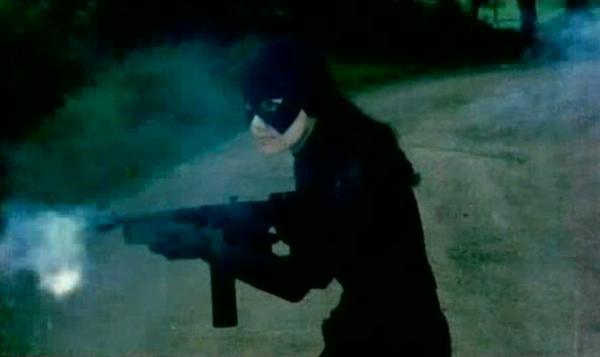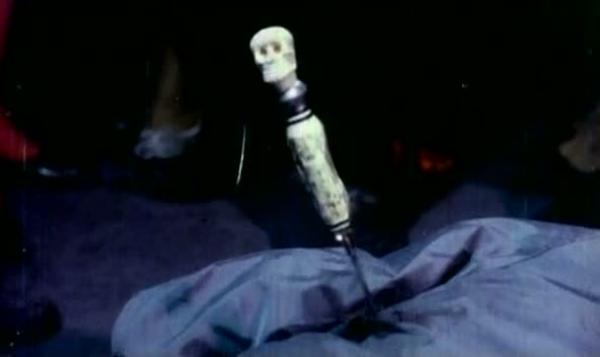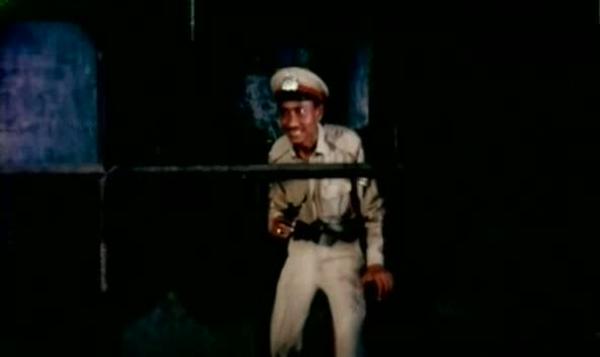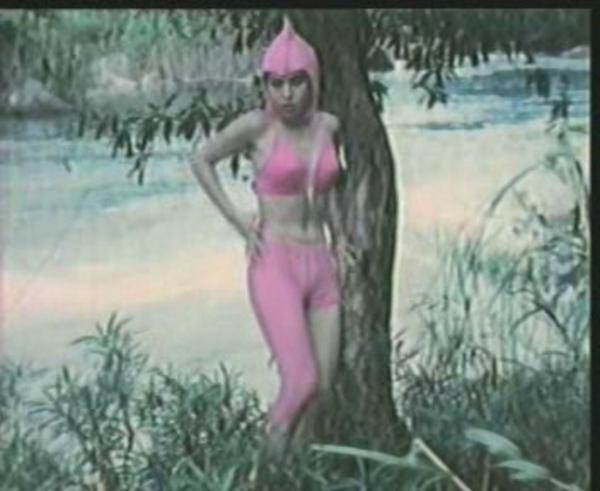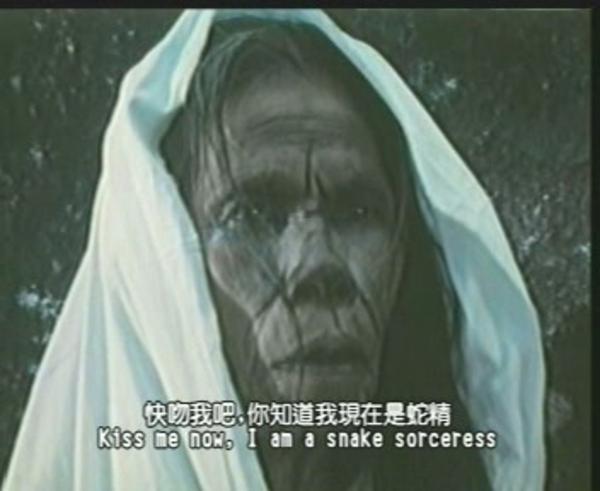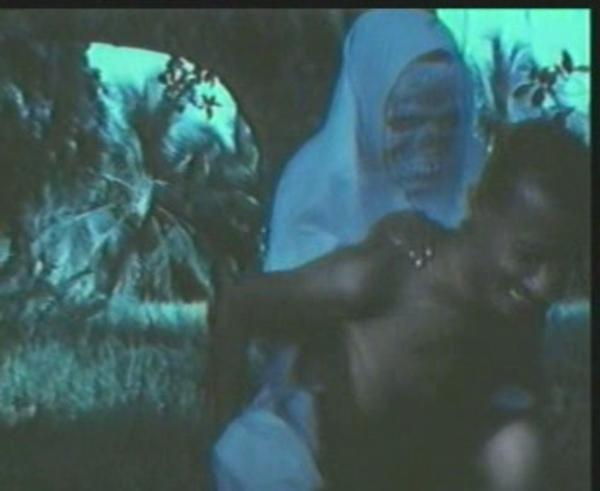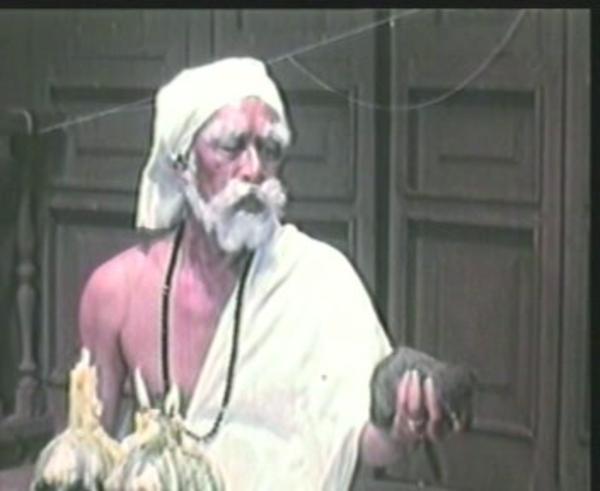
Awasan Insee Daeng
aka The End of Red Eagle
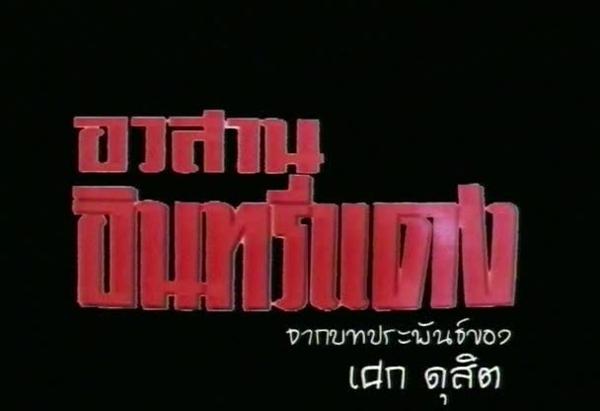
1963
Directed by ???
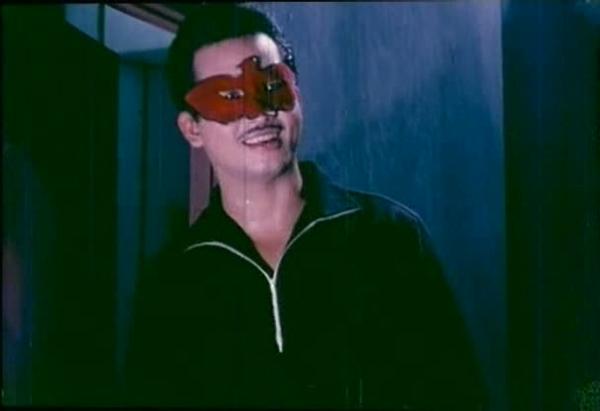
Insee Daeng (Red Eagle) is the most famous super hero out of Thailand. Starting out as a pulp novel character, Insee Daeng was immortalized in film by popular actor Mitr Chaibancha, who became a legend before dying tragically while shooting the final scene of the sixth Insee Daeng film, Insee Thong. TarsTarkas.NET will review the surviving Insee Daeng films and the rebooted film, because that’s how we roll here.
Awasan Insee Daeng is the third Insee Daeng film, but it is the earliest surviving Insee Daeng film. Unsurprisingly, the vcd release is just titled Insee Daeng, which is the title of the original entry in the series, but that film is believed lost. We will deal more of the history of the Insee Daeng film series in our review of Jao Insee, and information about the stars Mitr Chaibancha and Petchara Chaowarat and early Thai film industry in the review of Insee Thong. For now, we’ll instead have a history of post-World War 2 Thailand, gun culture, and the pulp stories movement that gave birth to Insee Daeng and his contemporaries.
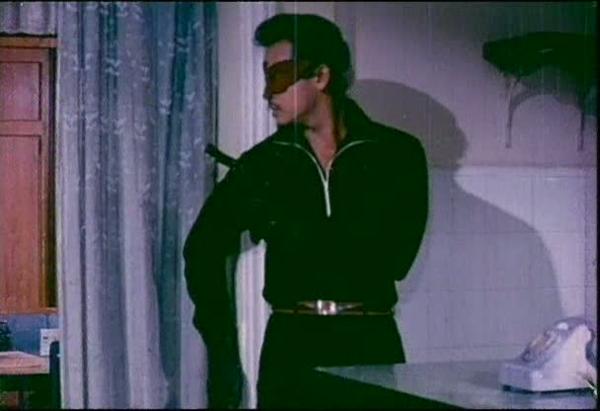
Thailand’s love of pulp heroes who take the law into their own hand has its roots in World War 2. During the war, Siam (as Thailand was known then) was invaded and quickly made a deal with Imperial Japan. But there was a covert resistance movement, known as Seri Thai or the Free Thai Movement. Before World War 2, the amount of guns in Thailand was minuscule, and most guns were breech-loading one-shotters. Seri Thai was armed by the Allies, while Japan used Siam as a staging area and guns flowed through it. By the end of the war, hundreds of thousands of guns were spread all over Siam, and soon rural bandit gangs began to form and terrorized the populace. The lack of police ability to control the bandit gangs lead to much dissatisfaction and unrest. Eventually this resulted in a Thai tradition, overthrow of the government, installing the Sarit regime in 1958. The Sarit made it a priority to take out the bandit gangs, though many persisted for years, and resurfaced as mafia in less than a decade.
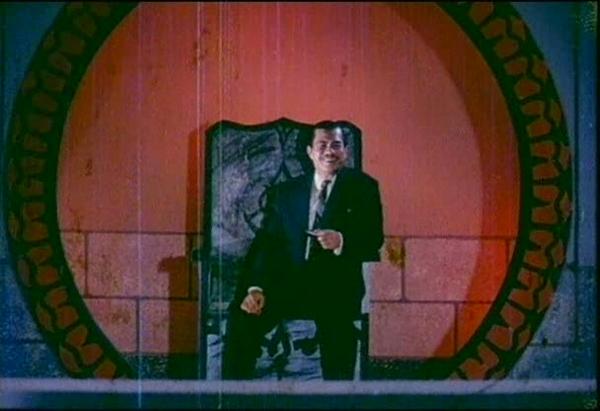
The gangs controlling the countryside mixed with urban populace hungry for books was a perfect storm for the rise of pulp heroes who confronted the bandit gangs or were bandit leaders themselves that acted in a Robin Hood fashion. The stories were serialized in daily magazines, some of which became so popular people would line up awaiting the next issue, sometimes right outside the printing press. The four major authors associated with the pulp hero stories were Poh. Intharapalit, Phanomthian, Sek Dusit, and Soh. Navaraj. There is scare information on some of these crime/violence romance novelists and most of this information is from a single source that pulls from other sources in Thai. The common themes of the stories are main characters who are rich and educated, usually with secret identities, who fight against gangs, corruption, communist plots, and grand conspiracies while outsmarting the villains and simultaneously staying ahead of the police at every turn.
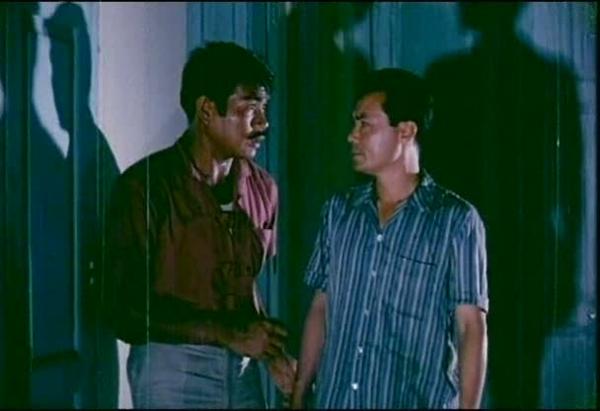
Poh. Intharapalit first gained fame with the 1932 drama Nakrian Nai Roi, but it was his “Three Buddies” stories that started during World War 2 that established his writing popularity. By 1947, he was editing the daily serial fiction magazine Piyamit, as well as writing the serial story Sua Bai (Tiger Bai)/The Bandit Called Bai). Sua Bai began the romance violence genre, with its story of a noble bandit who fights against a corrupt government. The unofficial story in the publishing world is that Intharapalit was “requested” to end the story by the police to to avoid their looking bad for failing to catch a fictional character. He then began a new series, Sua Dam (“Tiger” Dam/The Bandit called Dam), who would in a later series meet Sua Bai and team up. His four other famous characters are Dao Chon (Bandit Chief), Luk Dao Chon (Son of the Bandit Chief), Nakak Dam (Black Mask), and Yiao Thale (Sea Hawk).
Phanomthian started writing as a high school student, and later went to university in India. Upon returning to Thailand in 1955, he began publishing his stories in the magazine Ploenjit. Hao Dong (Wild Cobra) stands out because it has a female costumed heroine in the lead, sporting an all-black costume except for the giant cobra pictured on her shirt. Later creation Lep Khrud (Garuda’s Nail) featured a secret agent Cheep Chuchai vs. secret Chinese communists lead by Chang Suliang.
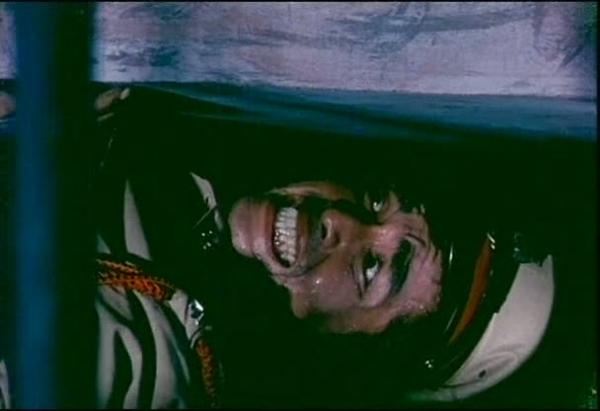
Soh. Navaraj was the youngest of the violence romance writers. His most famous creation was Yiao Ratree (Night Hawk), a hero with black outfit and a black mask in the shape of a hawk that fought crime by night but during the day was pretend madman and rich scion Man Damkoengdej. Besides aping Red Eagle’s costume, Night Hawk was also involved in fighting secret communist societies.
Sek Dusit began writing in his early 20s, gaining fame with a hero named Khom Phayakharaj in stories See King (Four Kings) and Khrud Dam (Black Garuda). Khom fought against criminal organizations threatening Bangkok, and the stories . In 1954, the 25 year old Sek Dusit would start stories of his most famous creation, Insee Daeng (Red Eagle). Millionaire son Rome Ritthikrai went undercover as hero Insee Daeng and fought against criminal gangs and communist plots, often injecting the cold war paranoia into his classic bandit tales. He is still alive, but now just writes astrology columns.

Sek Dusit says you got Capricorn in your Leo!
Here is a collection of covers of Insee Daeng and other hero books and comics.
As the Thai film industry was getting big in the late 1950s, it made sense that some of these hugely popular stories would end up on the silver screen. And while I can’t say for certain every pulp hero that made it to the cinema, I can give many examples of both direct book-to-movie heroes, and heroes that possibly started in pulp or were inspired by the pulp heroes.
In addition to the Insee Daeng series (a more complete summary of that film series will be covered in the Jao Insee review), Thai pulp bandit heroes movies include:
1958’s Hao Dong, starring Amara At-Savanon (2nd Runner-up Miss Thailand 1953 who starred in scores of films before retiring) as the bandit heroin with a cobra logo on her shirt. I do not know if this film still exists. More info in Thai.
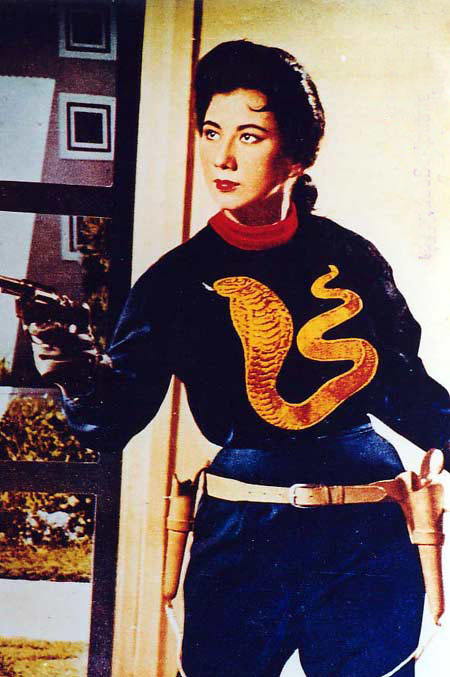
Amara At-Savanon as Hao Dong
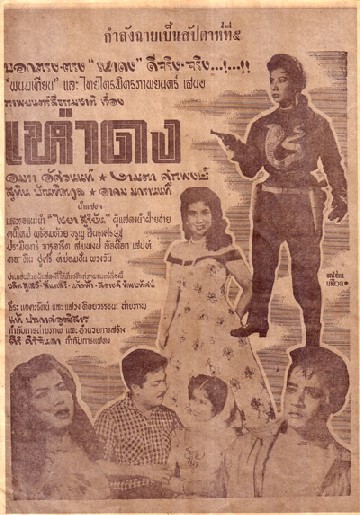
Hao Dong poster
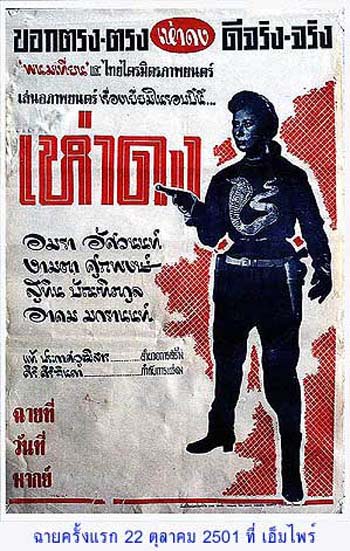
Hao Dong poster
1958’s Mong Daeng (Red Bandit), which I can only find old ads for, featuring another female hero. There is a modern tv drama series by the same title complete with a masked female heroine with a whip. I am almost positive it is the same franchise, but not 100% positive.
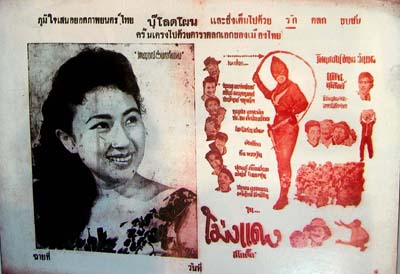
Mong Daeng poster
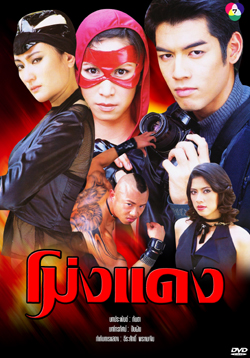
Modern Mong Daeng artwork
1959’s See Kings based on Sek Dusit’s story, also costarring Amara At-Savanon. It was remade in 1982. More info in Thai.
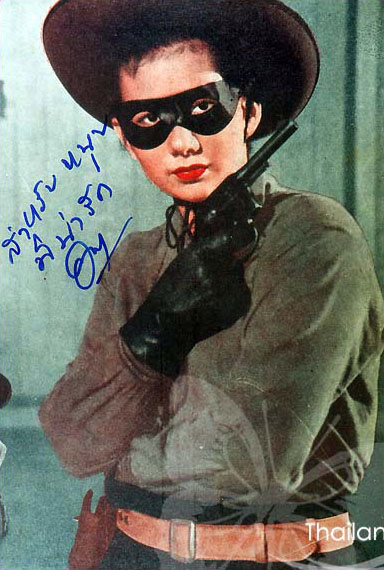
Four Kings promo shot (autographed!)
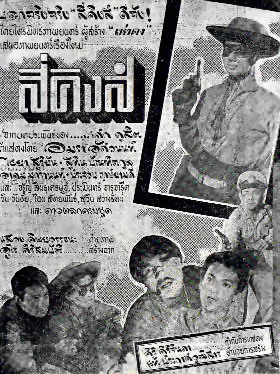
Four Kings poster
1963’s Kewpit aka Poison Fang, starring Mitr Chaibancha and Amara At-Savanon. Kewpit is a black masked hero similar to Red Eagle, judging solely from the lone movie poster I could find.
Thaifilmdb info.
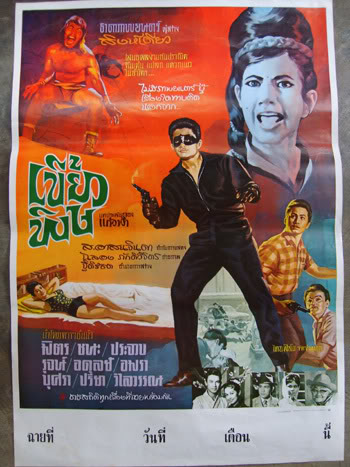
Kewpit poster
1981’s
Yord Ying Poo Ying Yai starring Sombat Metanee. This one I can tell you does still exist on an out of print vcd.
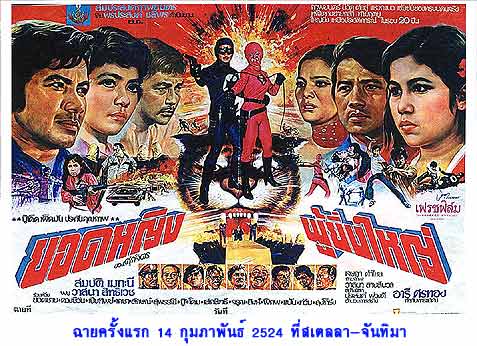
Yord Ying Poo Ying Yai mocks the internet for not locating a copy
And there is this movie that I haven’t IDed yet, but the picture was labeled Yiew Ratree:
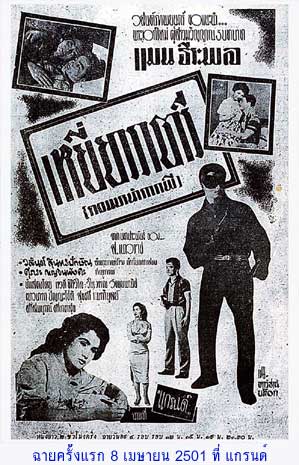
Who you callin' a Rat Tree?
And don’t worry, if you missed reading any of this, it will probably be ganked verbatim without attribution by a certain site profiling superheroes who live.
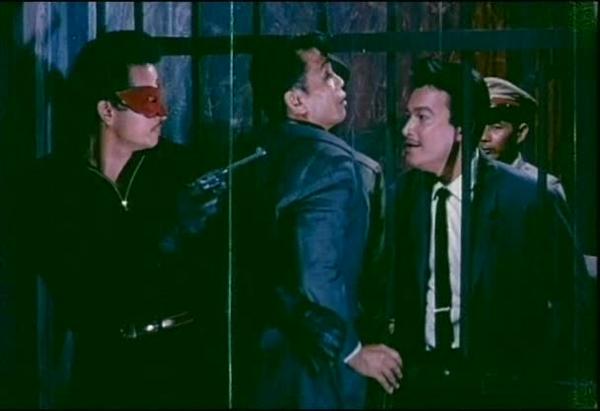
Awasan Insee Daeng is a typical Thai film of the time, filled with that Thai comic relief stuff in much of their films that I don’t understand. There are comic relief effeminate characters filled throughout, even one of the police detectives. These comic relief characters both allow for humor in the film and also serve a function in making the male hero even more hyper-masculine than you ever thought possible. But that doesn’t mean the effeminate guys are wimps, a whiny detective goes toe to toe with Insee Daeng and although he loses, he manages to bruise Insee’s face enough he has to lay low until he heals.
Continue reading →
 That’s right, it’s another episode of Infernal Brains, the podcast that doesn’t have a catchphrase yet.
That’s right, it’s another episode of Infernal Brains, the podcast that doesn’t have a catchphrase yet.








